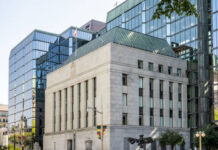Monday blues kicked in following a $7 trillion rally since July, which was mainly fueled by the expectation that the recession rhetoric would convince the Federal Reserve (Fed) to stop raising the rates and even start thinking about cutting the rates.
Now that the Jackson Hole meeting approaches, those bets are vanishing, as there is no way the Fed will soften its tone while inflation still hangs around the 8.5% level. Plus, the US jobs market has been giving signs that it’s resilient to the policy tightening – with monthly NFP prints coming in way better than expectations each month. And the earnings season has been better than feared as well.
The unstoppable dollar rally
Yesterday’s equity selloff was escorted with a jump in the US 10-year yield to above 3%, and a rally in the US dollar. The dollar index hit the 109 level yet again, and the broad-based rally in greenback sent the major peers depressed.
The EURUSD sank below parity, even before the print of the PMI figures, which will anyway show that the economic activity in Europe is slowing to a point that the ECB cannot start hiking rates at the same speed than the Fed.
And even if it did, it wouldn’t really bring inflation down, knowing that most of the European inflation problem is triggered by the skyrocketing energy prices; instead of hiking the rates by more than necessary, Christine Lagarde would better beg Putin to restore the energy supply to Europe.
Nat gas prices are hard to watch
The Nordstream pipeline is again closed for maintenance for three days. The last time the pipeline was closed for maintenance, Russians restored the gas flow, but much less. The European nat gas prices took a lift, and are now around 20% higher than the March peak.
The soaring nat gas prices shift the energy demand from gas to oil, throwing support under the crude selloff. The barrel of American crude is consolidating a touch above the $90 per barrel, with growing prospects of further gains toward the $100 per barrel.
Saudi Arabia warned that OPEC+ could reduce its oil output to counter sharp declines in oil prices. Saudi Oil Minister Prince Abdulaziz bin Salman said that the extreme volatility and a lack of liquidity mean that the futures market is increasingly disconnected from fundamentals, and that OPEC+ may be forced to cut production.
At this point, the only hope is to see the Iranian oil hit the market again. If the US and Iran could agree on a nuclear deal, Iran could increase its daily oil production to around 4 mio barrels a day, which could give a much-needed relief to the market.
For now, the oil companies are cashing in. Occidental Petroleum jumped 10% on Friday as the US energy regulator gave an OK to Warren Buffett’s Berkshire Hathaway to acquire 50% stake in the company. But to be honest, oil companies don’t need Warren Buffett to feel the energy. BP is up by around 25% since mid-July, and the BP gains cannot be defined as a bear market rally.
Could the euro sink deeper?
Yes, the EURUSD could sink deeper below parity, but how far it could go will mostly depend on how much the dollar can rally from here?
It is increasingly likely we see the dollar index hit 110 mark, but whether it could extend gains meaningfully above that level is the million-dollar question.
Because if it did, we are all in trouble. Not only that the hawkish central bank expectations don’t live up to the hawkish Fed expectations, but the strong dollar will add to the inflationary pressures elsewhere in the world, leaving other countries in an accelerating inflation spiral due to higher import prices, and with tightening monetary policies that don’t even help getting their currency valuations right.
Pray for the dollar to soften
In precious metals, gold sank below the $1730 level yesterday on the back of a stronger dollar and rising US yields, that increase the opportunity cost of holding the non-interest-bearing gold. The yellow metal no longer acts like a good hedge against market selloffs, it sinks along with the risk assets instead. For that to reverse, we need the dollar to soften.












